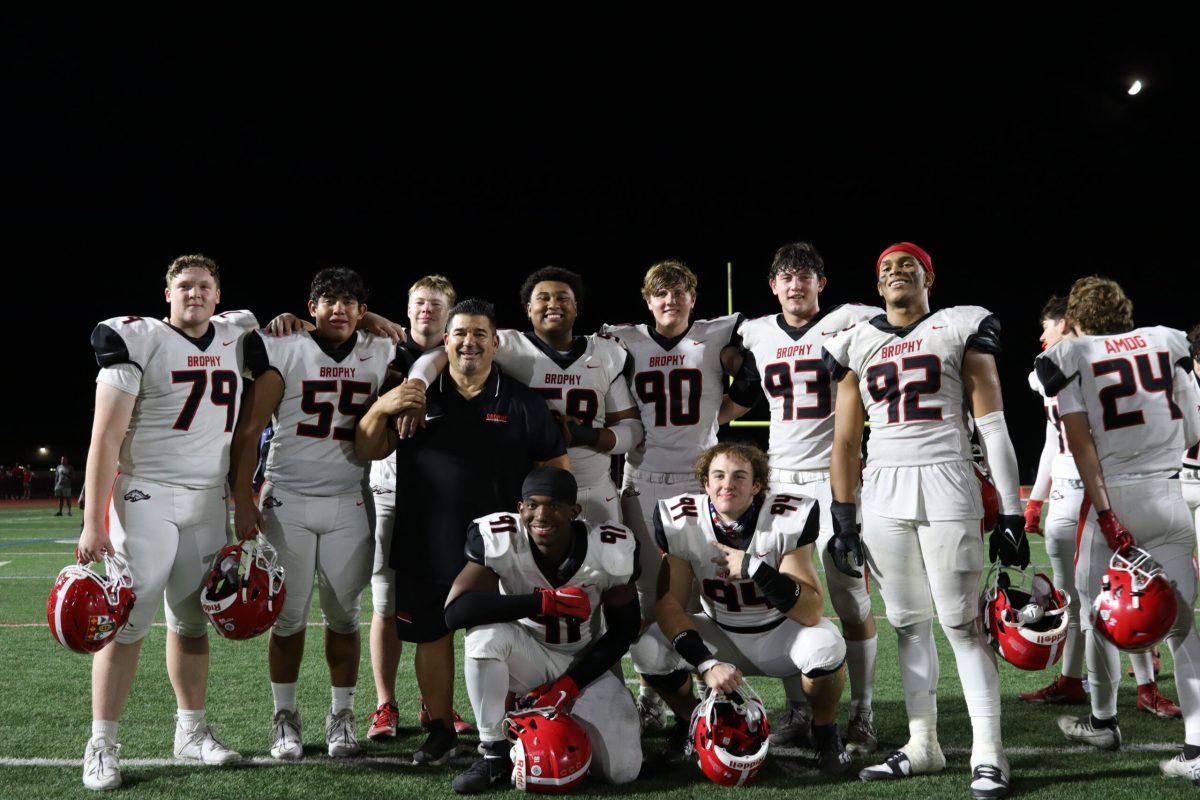Site choices contradict AIA’s “neutral” location listing
Commentary by Henry Erlandson ’16 & Andrew Howard ’17
THE ROUNDUP
The Arizona Interscholastic Association sure has a unique interpretation of the word “neutral.”
In a Division 1 semifinal playoff game this December that was supposed to be at a “neutral location,” Centennial played Mountain Pointe at Desert Vista High School.
Desert Vista is a nine minute, 3.6 mile drive from Mountain Pointe in the same small part of town, and a 43 minute, 42.8 mile trek from Centennial, according to Google Maps.
This is not the first time there has been such a discrepancy in distance.
Last year, Brophy experienced a very similar situation during the semifinals.
The game’s location at Chandler High School was 26.1 miles from Brophy but 3.9 miles–and also on Arizona Avenue–from Hamilton. Brophy lost 24-7.
There was a similar distance discrepancy in the other 2014 Division 1 semifinal game between Mountain Pointe and Chandler High School.
Their game was at Hamilton, 13.3 miles from sixth ranked Mountain Pointe and 3.9 miles from second ranked Chandler. Chandler beat Mountain Pointe 43 to 22.
This year Centennial went on to beat Mountain Pointe 31-21 Friday, Nov. 20, but that does not excuse the AIA’s decision to clearly favor the Mountain Pointe Pride by playing at Desert Vista, which is essentially in their own Ahwatukee backyard.
Each year the AIA’s football playoff bracket says that semi-final playoff games are held at “neutral” locations, but an AIA representative said the regular practice often works differently.
“The AIA practice for Division I/II/III is to place larger, urban based schools’ semi-final game at a site in the area of the high seed,” said AIA Tournament Coordinator Mr. Ron Halbach in an email.
Mr. Halbach pointed to several other playoff locations that were at schools in the same district and closer to the higher-seeded team.
This completely contradicts the word neutral, which should create a fair playing field for both teams.
There is nothing wrong with favoring a higher seed because they earned it throughout the year if that is what the AIA wants to do. But to call the location “neutral” on the tournament brackets is misleading at least, and is not fair to the lower seeded teams and their students at worst.
Article 23.10.1.1.1 of AIA policy says, “the AIA Executive Board shall determine the dates and sites of post-season tournaments.”
This rule gives the AIA all of the power to determine game locations, yet it never specifically says a game has to be neutral. So they aren’t breaking any rules when they list games as neutral though they clearly are not.
Mr. Halbach said other factors that go into playoff site choices are enough seating for fans, the quality of the locker rooms and restrooms, and making things run as smoothly as possible.
This is all fair, but why go through the trouble to find an entirely new location if you are favoring the higher seed anyway? Why not just have the game at the higher seeded team’s stadium if all those things are in place?
The impact of playing at a stadium that favors one team over another in distance can be very consequential in the outcome of the game, as school support can give players and coaches momentum that can change how a team plays.
“Any time the fans get into the game and there is excitement and a reason to go to the games, it’s a home field advantage,” Brophy head football coach Mr. Scooter Molander told The Roundup in a May 2015 interview about the advantages of playing at home.
The AIA is not violating any policies by favoring higher seeded teams, but at the very least they should change their language for the sake of transparency.
And why not just change the policy to actually play semi-final games at neutral locations?
After all, shouldn’t the AIA try to do everything in its power to support all students by creating level playing fields rather than such lopsided matches?
As students, fans, and supporters of high school football, we should expect high-level competition to be treated with a sense of equality and fairness that abides by the rules, and the AIA should be held accountable to maintain these standards.


















